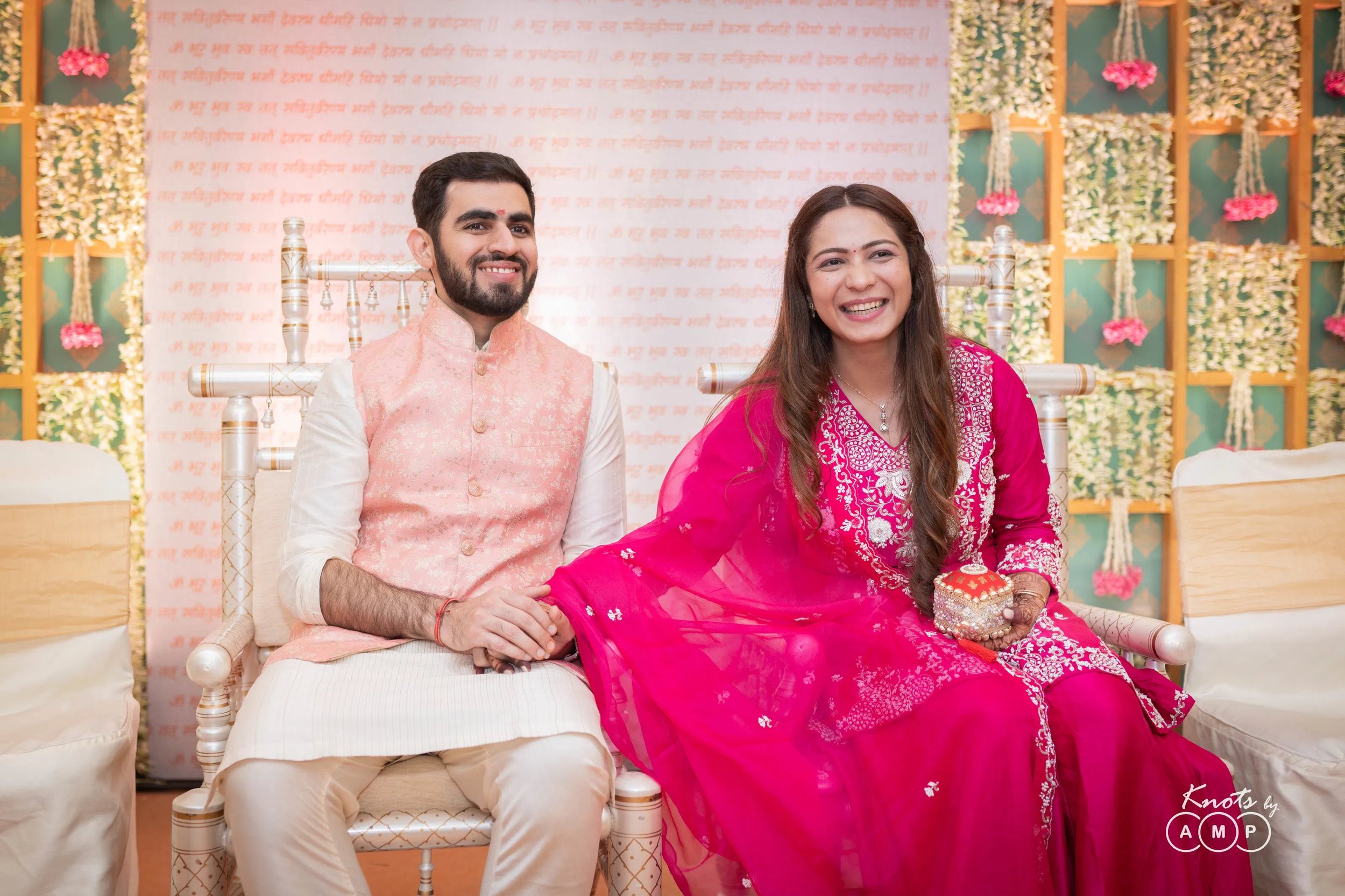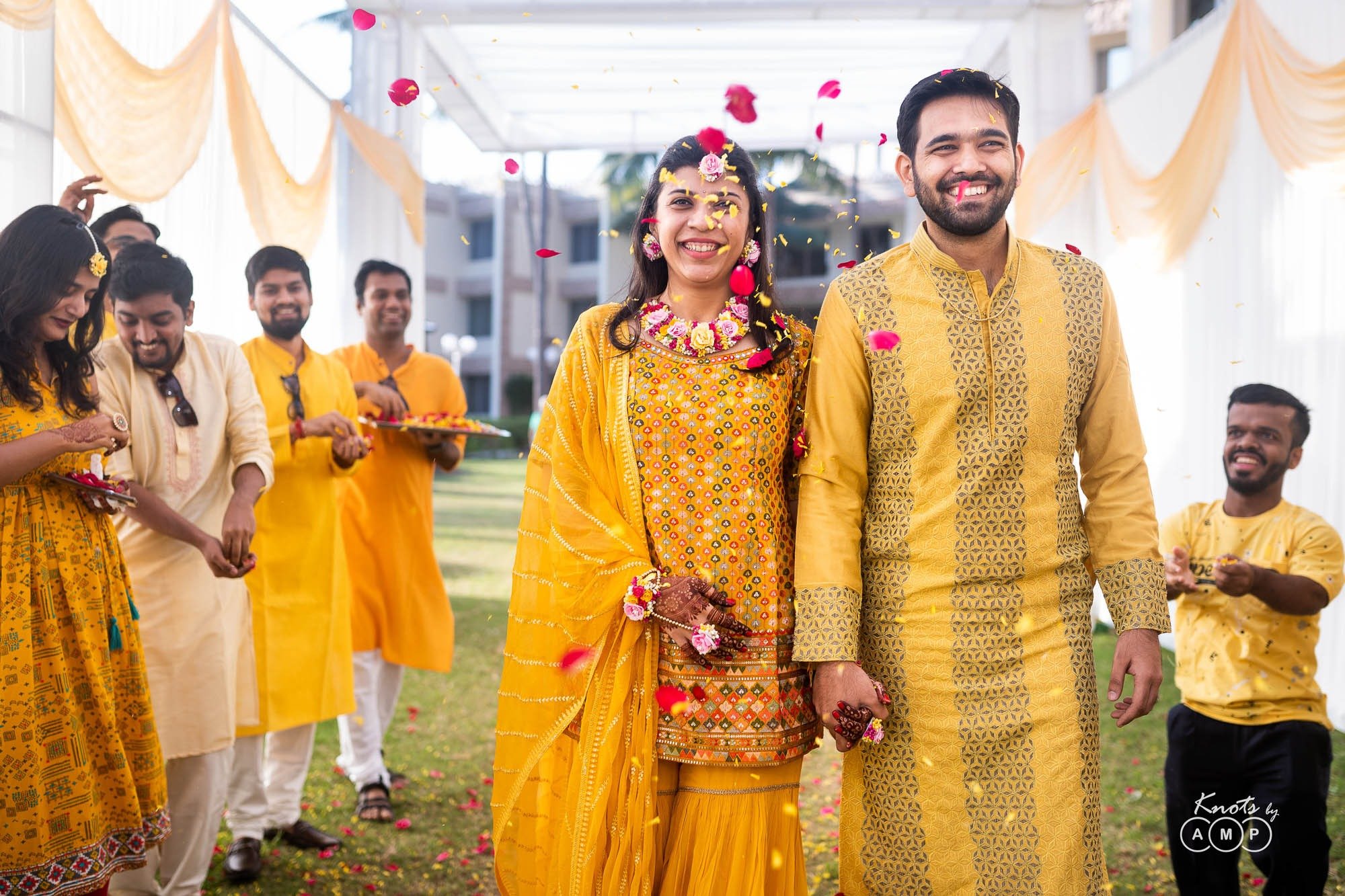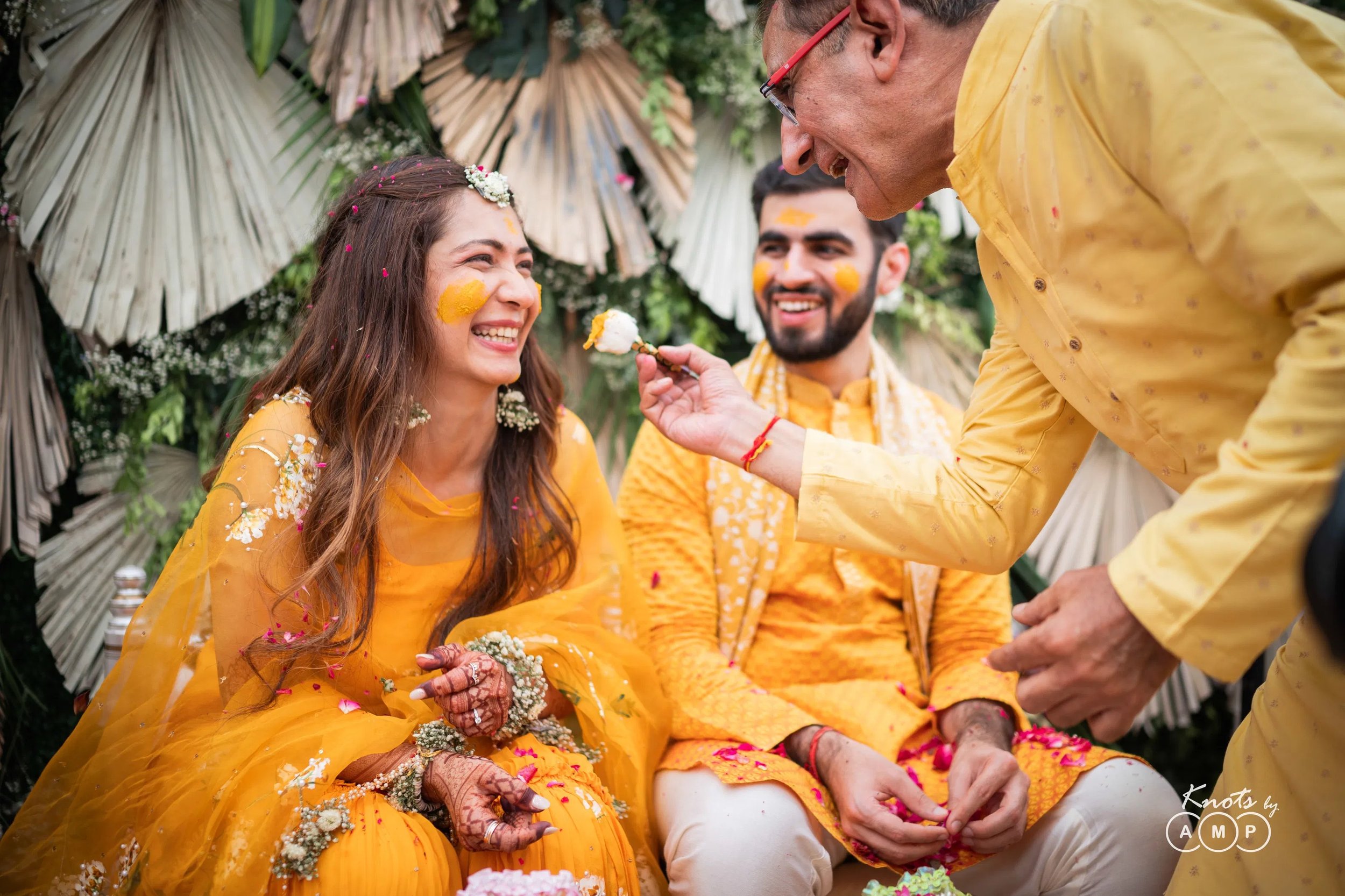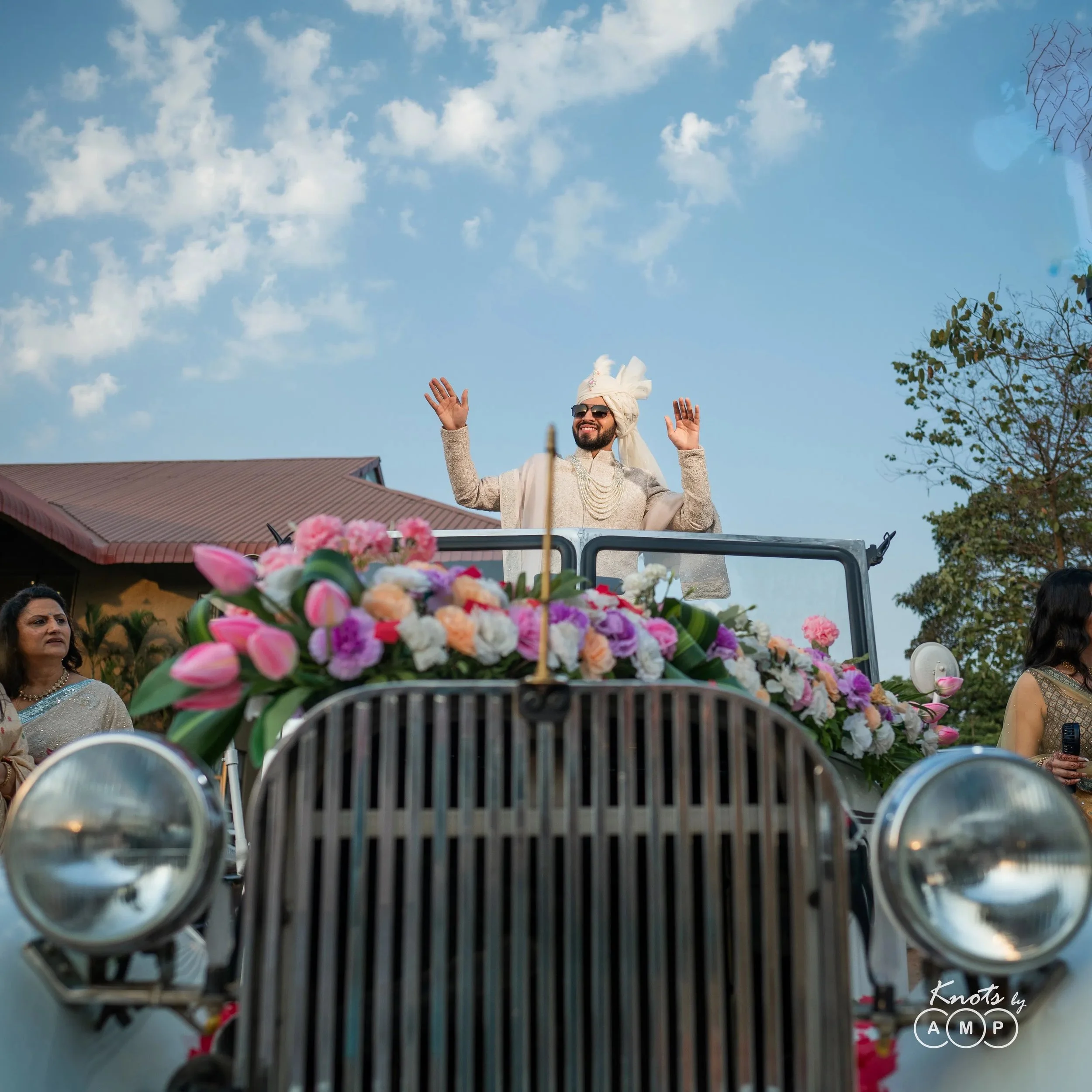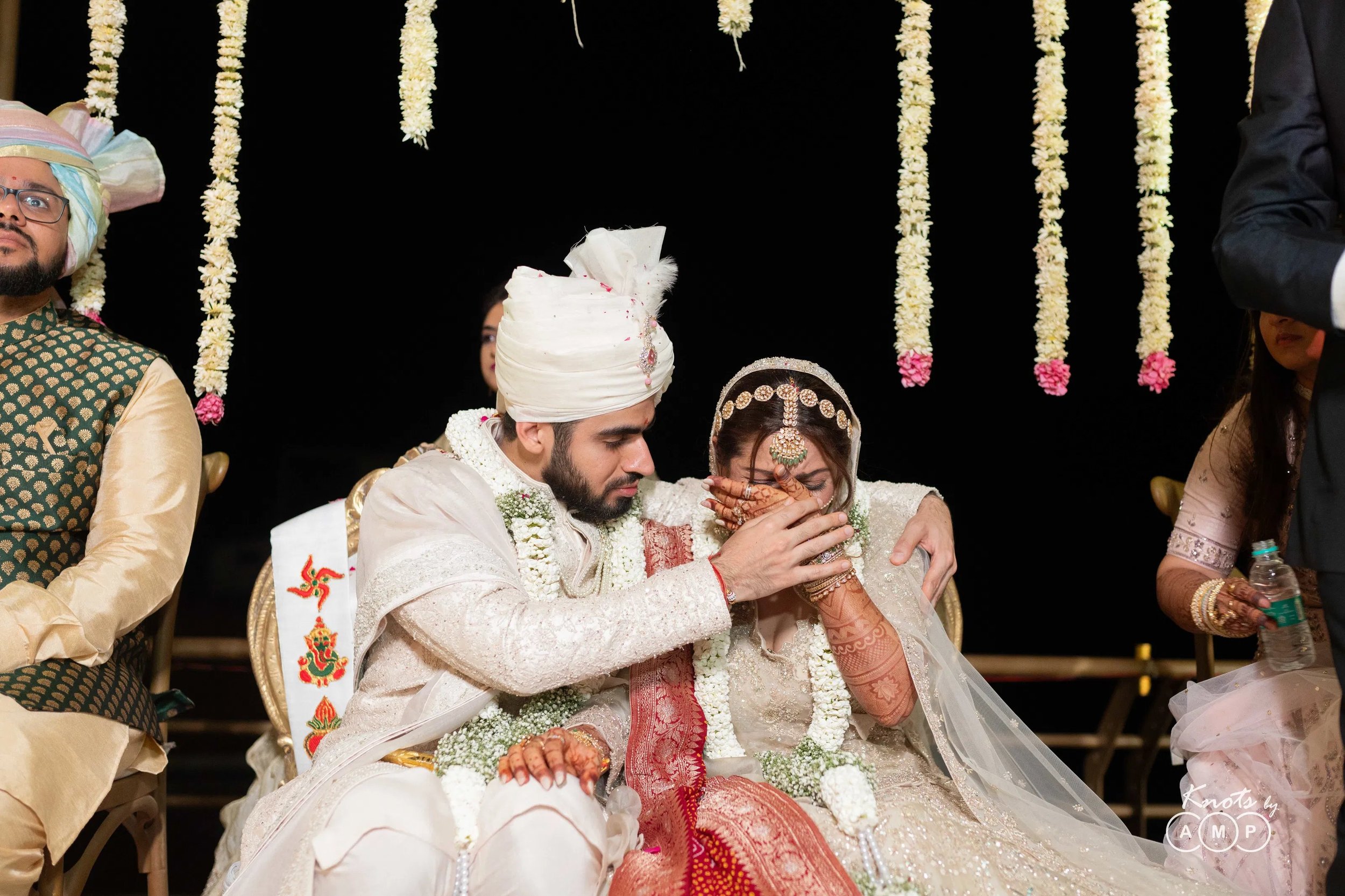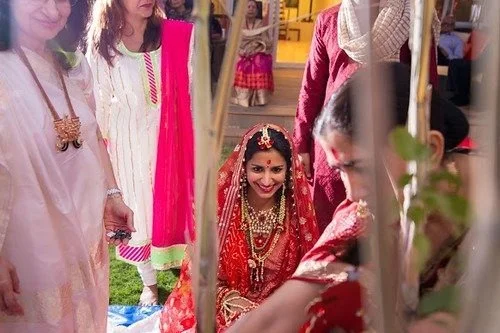Rich Traditions of Royal Marwari Weddings
Marwari weddings originate from the princely state of Marwar, particularly the Jodhpur region in Rajasthan. These celebrations showcase the rich cultural heritage that defines the community's traditions. The festivities radiate joy and enthusiasm.
A royal Marwari wedding creates an unforgettable spectacle where each ritual carries profound meaning. The bride's silk lehenga and the groom's traditional achkan and pagri tell stories of heritage. Sacred ceremonies like Roka, Naandi Ganesh Pooja, and Saptapadi blend seamlessly into the celebrations. In this piece, we share our experiences of capturing these timeless traditions through our lens. These ceremonies beautifully combine ancient customs with magnificent celebrations.
A Visual Journey Through a Royal Marwari Wedding
Royal Marwari weddings tell an exquisite visual story through the photographer's lens. These celebrations come alive like paintings—vibrant, dynamic, and deeply rooted in tradition.
Capturing the grandeur of Marwari wedding venues
Memorable Marwari wedding photographs need the perfect backdrop. Regal halls of Taj Bengal, opulent settings of Hyatt Regency, and the historic charm of The Oberoi Grand in Kolkata each bring their unique character to the wedding album. The magnificent Umaid Bhawan Palace in Jodhpur stands out as an iconic venue that hosted many high-profile celebrations, including Priyanka Chopra and Nick Jonas's wedding.
These venues shine differently as lighting conditions change throughout the day. Palace courtyards bathed in golden sunset light create magical settings for couple portraits. Intricately designed ballrooms with crystal chandeliers serve as elegant backdrops for family photographs.
The venues showcase their true grandeur after dark. The palaces are "lit up like jewels, with intricately decorated lawns and floral installations," creating breathtaking scenery for evening ceremonies. Each frame captures the majestic architecture that silently tells its own story.
The role of colors and decor in storytelling
Colors breathe life into Marwari wedding photography. The traditional palette features vibrant reds, yellows, greens, and golds—each shade holds symbolic meaning. These rich colors naturally draw the eye and create stunning focal points in our compositions.
Marwari weddings feature unique decorative elements that add layers of visual interest:
Toran: These decorative arch hangings that adorn entrances create beautiful framing opportunities
Traditional props: Handcrafted puppets (Kathputli), embroidered umbrellas, and brass accents showcase Rajasthani craftsmanship
Mirror work: Reflective surfaces multiply candlelight's beauty and create magical bokeh effects
The wedding décor incorporates "colorful fabrics, lighting, and traditional arrangements" that reflect Rajasthani esthetic traditions spanning centuries. Natural beauty flows through flower arrangements of roses, lilies, and purple orchids that complement the architectural elements.
Our lens captures how these decorative choices connect different ceremonies—from Haldi's vibrancy to Feras' solemnity. The wedding album tells the couple's authentic story with visual continuity.
Pre-Wedding Moments That Set the Stage
The royal Marwari wedding's colorful canvas comes alive days before the main ceremony. Pre-wedding rituals create breathtaking visual opportunities for photographers.
Roka and Sagai: The first steps of union
A Marwari wedding experience begins with Roka, where both families unite officially. Parents perform Tilak for the couple and exchange gifts. This intimate ceremony marks the couple's formal betrothal and lets us capture genuine family bonding moments.
The Mudda Tikka or Sagai (engagement) happens a day or two before the wedding. The groom's family visits the bride with gifts and sweets while the couple exchanges rings. Modern celebrations often combine these two ceremonies into one festive event. Our lens captures meaningful glances between the couple and their newly adorned rings' shimmer.
Mehndi and Mehfil: Joyful celebrations before the vows
The Mehndi ceremony buzzes with energy as artists adorn the bride's hands and feet with intricate henna designs. Marwari weddings stand out because the groom also gets mehndi designs on his hands – a tradition that brings good fortune. This unique custom lets us capture parallel stories through our photography.
Mehfil, also known as Sangeet, turns evenings into music and dance celebrations. These gatherings split into "ladies mehfil" and "gents mehfil" showcase traditional attire and the mesmerizing Ghoomar dance. Dynamic photographs come alive with changing lights, joyful expressions, and flowing dance movements.
Family rituals like Bhaat and Myra through the lens
The Bhaat Nyotana ceremony adds a tender touch as the bride celebrates with her maternal family and invites them to the wedding. Next comes Bhaat Bharna, where relatives present her with special gifts.
The Mayra ceremony creates the most photogenic moments one or two days before the wedding. The maternal uncle arrives with gifts for the bride/groom and their family. This ritual shows off the family's wealth and status naturally. Elaborately decorated venues and splendid attire create a visual spectacle that deserves careful documentation through our lens.
The Wedding Day: Rituals, Emotions, and Traditions
A Marwari wedding celebration's rituals represent a spiritual bond between two souls. These ancient traditions blend with stunning visuals that create powerful stories through photography.
Telbaan and Pitthi: The glow before the vows
The special day starts with Telbaan, where both bride and groom take a ritual bath at their homes. A paste made of turmeric, mustard oil, and fresh curd goes on their face, hands, and feet to improve their natural glow. The ceremony continues as they eat sweet jaggery pancakes called ghunghra. Their maternal uncles give shagun money to bring good fortune.
Next comes Pitthi Dastoor, which is like the traditional Haldi ceremony. The couple gets covered in turmeric paste that gives them a radiant look. Their relatives help wash away the paste with holy water. These moments are filled with laughter and playfulness that make for perfect candid photos.
Baraat and Toran: The groom's royal arrival
The groom and his entourage head to the wedding venue in the Baraat procession. Photographers love this part as the groom sits on a decorated mare while family and friends dance around him to celebratory music.
At the venue entrance, the groom performs the Toran ritual. He touches a decorative arch with a neem stick to ward off negative energies. The bride's mother welcomes him with an aarti and offers sweets and water. These moments capture two families becoming one.
Jaimala and Saptapadi: Sacred vows in vibrant frames
Inside the mandap, the bride places seven suhalis (a type of snack) over the groom's head. They exchange flower garlands or Jaimalas as everyone cheers and blesses them. This exchange shows they accept each other and want to share life's responsibilities.
The couple then performs Saptapadi (seven steps) around the sacred fire that witnesses their union. Each round comes with solemn promises about keeping each other fed, strong, prosperous, happy, blessed with children, healthy, and lifelong friends. Their steps around the fire create meaningful images that show their commitment to marriage.
Post-Wedding Traditions and Farewells
A royal Marwari wedding's end marks a beautiful move into new beginnings. These moments capture both heartache and joy.
Vidaai: Capturing the emotional goodbye
The Vidaai ritual stands out as one of the most touching moments in Marwari wedding photography. The couple performs a special thali pooja in the bride's home kitchen before leaving. This intimate ceremony gives photographers a great way to get authentic emotions through candid shots.
The bride receives a dried coconut filled with coins and sugar during this ritual. She later presents this to her mother-in-law as a symbol of sweetness and prosperity in her new home. The bride's ornate attire contrasts beautifully with these simple traditional items, creating compelling photos.
Raw emotions flow freely during the farewell. Tears and heartfelt goodbyes give photographers a rare peek into genuine feelings. Someone breaks a coconut beside the car wheel as the bride leaves - an auspicious start to her new life. These small yet meaningful details make powerful close-up shots that tell a deeper story.
Pag Phera: A warm return to the bride's home
The newlyweds visit the bride's family home for the Pag Phera ceremony after settling into their new life. This homecoming creates joy - quite different from the Vidaai's emotions. Photographers can capture an entirely new spectrum of feelings through their lens.
The couple brings gifts, usually sweetmeats, that represent sweet beginnings and lasting bonds. Family members tease the couple playfully. Siblings and cousins crack jokes about their new life together. These natural interactions lead to genuine smiles and laughter - perfect moments for documentary-style wedding photos.
This simple tradition carries deep meaning. Marriage doesn't break the bride's connection with her roots - it expands her family circle instead. The story moves from formal wedding rituals to relaxed family gatherings. Photos capture celebration, acceptance, and lasting kinship, bringing the visual narrative full circle.
Conclusion
Our camera lens captures the beautiful blend of age-old traditions and modern celebrations in Marwari weddings. These ceremonies showcase a unique story through each ritual - from the colorful Mehndi ceremonies to the touching Vidaai. Every moment reflects deep cultural meaning and visual beauty.
Majestic venues like Umaid Bhawan Palace create stunning backgrounds, but we find real magic in the small family moments. The groom's grand Baraat entrance and the emotional goodbye during the bride's farewell show the strong family bonds that make these weddings unique.
We feel honored to document these traditions for generations to come. Rich colors, detailed decorations, and meaningful customs naturally come together in wedding albums that show both luxury and real emotions. Our images tell the story of two families uniting in love while celebrating their rich heritage.
FAQs
Q1. What are some unique traditions in a Marwari wedding?
Marwari weddings feature several unique traditions, including the Mehndi ceremony where both bride and groom receive henna designs, the Mayra ritual where maternal uncles present gifts to the couple, and the Toran ceremony where the groom touches a decorative arch at the venue entrance with a neem stick to ward off negative energies.
Q2. How does the Baraat procession unfold in a Marwari wedding?
The Baraat is a joyous procession where the groom arrives at the wedding venue riding atop a decorated mare. He is surrounded by family and friends who dance enthusiastically to celebratory music, creating a vibrant and festive atmosphere.
Q3. What is the significance of the Vidaai ceremony in Marwari weddings?
Vidaai is an emotional farewell ceremony where the bride bids goodbye to her family before departing for her new home. It involves a special thali pooja in the kitchen, the bride receiving a coconut filled with coins and sugar, and the breaking of a coconut beside the car wheel for an auspicious beginning.
Q4. What is the Pag Phera ritual in Marwari weddings?
Pag Phera is a post-wedding tradition where the newlyweds visit the bride's parental home a few days after the wedding. They bring gifts, often sweetmeats, symbolizing sweet beginnings and continued family bonds. It's a joyful homecoming that reinforces the bride's connection to her roots.
Q5. How do colors and decor play a role in Marwari weddings?
Colors and decor are crucial in Marwari weddings, with a traditional palette featuring vibrant reds, yellows, greens, and golds. Decorative elements like Toran (decorative arch hangings), traditional props, and mirror work create a visually rich environment. These elements not only enhance the beauty of the venue but also carry symbolic meanings and reflect centuries of Rajasthani esthetic traditions.

